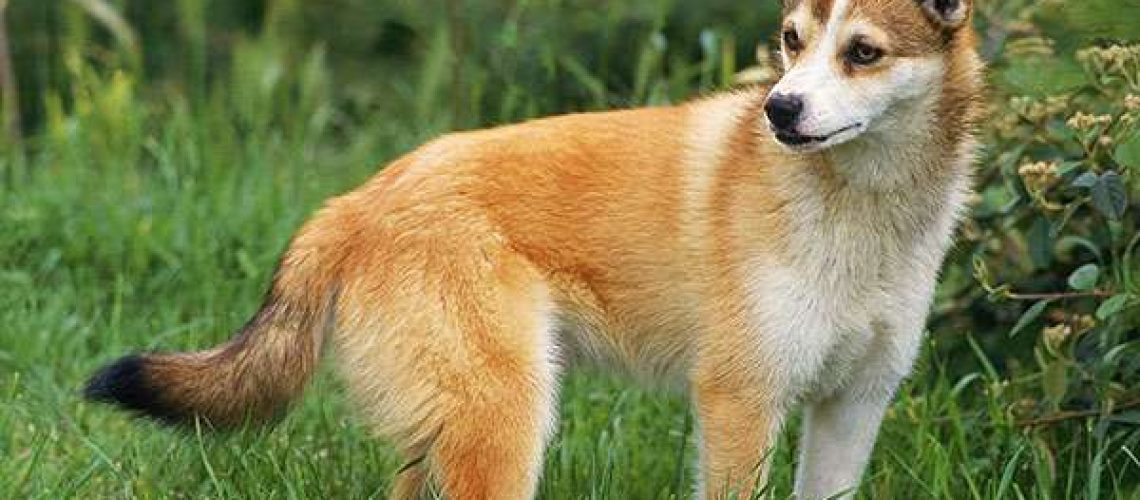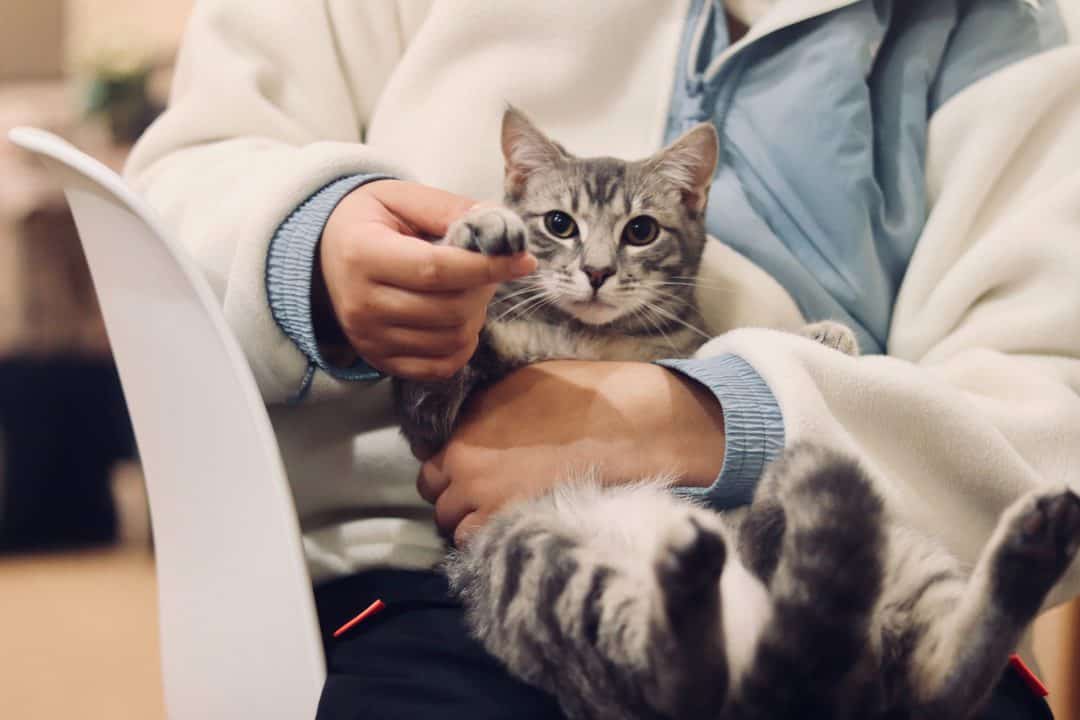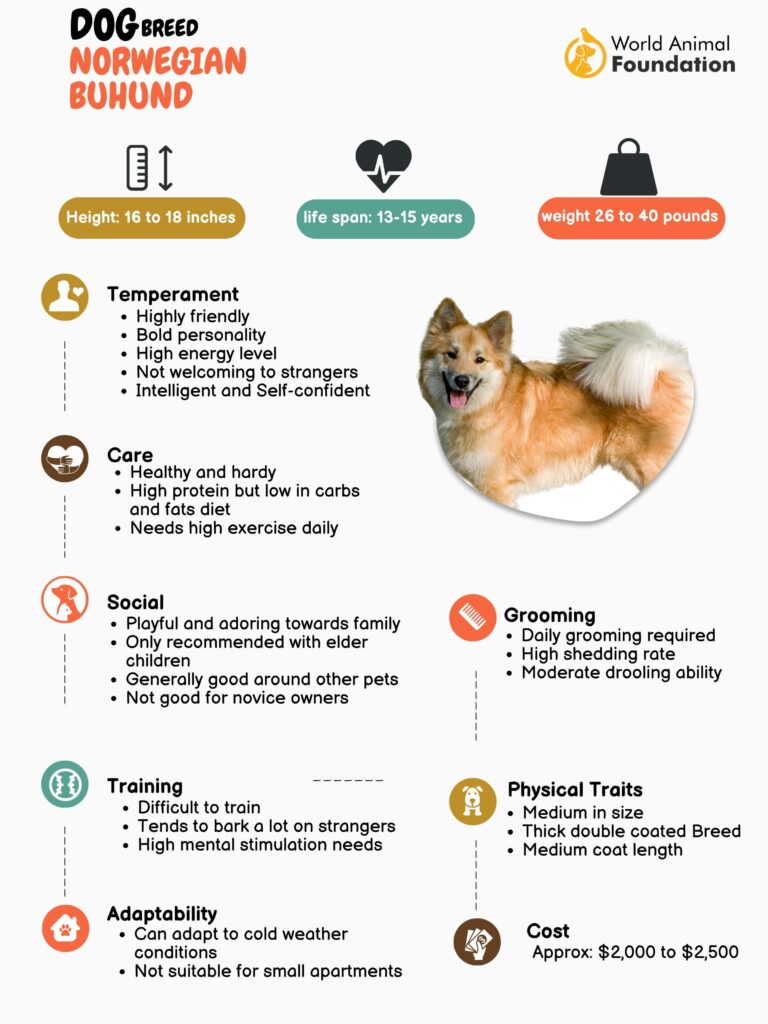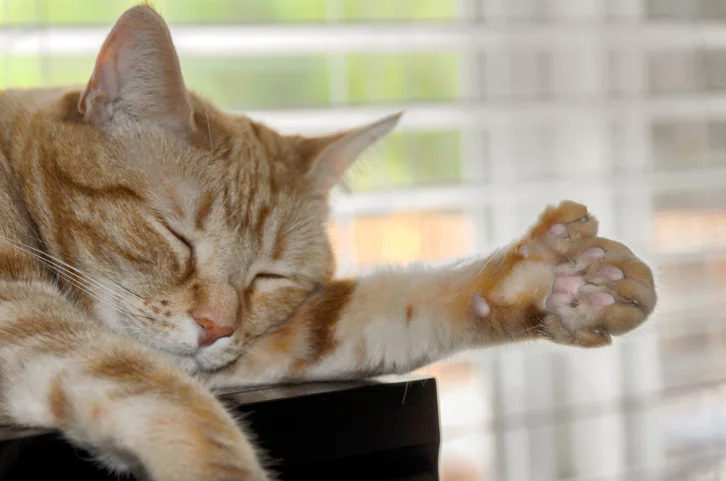Key Takeaways:
- The Norwegian Lundehund is a unique dog breed known for its extra toes and ability to squeeze into narrow spaces.
- They have a strong prey drive and were originally bred for hunting puffins along the Norwegian coast.
- Due to their high energy levels, they require plenty of physical exercise and mental stimulation to prevent boredom and destructive behavior.
- Lundehunds are prone to certain health issues such as gastrointestinal problems and joint disorders, so regular vet check-ups are essential.
- Proper socialization from an early age is crucial for this breed as they can be wary of strangers and may exhibit guarding behaviors if not properly trained.
Are you ready to embark on a journey into the fascinating world of the Norwegian Lundehund? This unique dog breed is like no other, with its captivating characteristics and distinct care requirements. By delving into this subject, you'll not only gain valuable knowledge about an extraordinary canine companion, but also uncover the secrets to providing the best care for these lovable creatures. Understanding the ins and outs of the Norwegian Lundehund is essential for any dog lover, as it allows you to truly appreciate their quirks and ensure their well-being. So, let's dive in and discover everything there is to know about this remarkable breed – from their agile bodies to their ancient origins – all while learning how to provide them with the love and attention they deserve. Get ready to be captivated by these remarkable dogs and become an expert in all things Norwegian Lundehund!
What is a Norwegian Lundehund and why is it unique?
A Norwegian Lundehund is a small, spitz-type dog breed that originated in Norway. It is known for its unique physical characteristics and hunting abilities. What makes the Norwegian Lundehund truly special is its flexibility and agility. This breed has an astonishing ability to bend its neck backward, touch its back with its head, and even rotate its front legs outwards. This incredible flexibility allows them to squeeze through narrow passages and climb steep cliffs during their hunting expeditions.
In addition to their extraordinary physical traits, Norwegian Lundehunds have some other unique features. They have six toes on each foot, while most dogs have only four or five toes. These extra toes provide them with better grip and balance, making them excellent climbers and sure-footed on rugged terrains. Moreover, they also have an extra set of dewclaws on their hind legs which helps them maintain stability when climbing rocky surfaces.
The Unique Physical Characteristics of a Norwegian Lundehund:
- Flexible neck that can bend backward
- Ability to touch their back with their head
- Front legs that can rotate outwards
- Six toes on each foot
- An additional set of dewclaws on the hind legs
The Hunting Abilities of a Norwegian Lundehund:
- Excellent climbers due to their flexible body and extra toes
- Can navigate narrow passages during hunts
- Adept at scaling steep cliffs in search of birds' nests
- Sharp sense of smell to locate prey
- Persistent hunters with high energy levels
Overall, the Norwegian Lundehund's unique physical characteristics and hunting abilities make it a fascinating and highly specialized breed.
How many toes does a Norwegian Lundehund have and why is this important for hunting?
A Norwegian Lundehund has six toes on each foot, which is more than most other dog breeds. This extra set of toes provides them with several advantages when it comes to hunting. The additional toes give them better grip and balance, making them excellent climbers and agile on rocky terrains. This is particularly important for their main prey: birds nesting in high cliffs.
When hunting, Norwegian Lundehunds need to navigate narrow passages and climb steep cliffs to reach the birds' nests. Their flexible bodies, combined with their extra toes, allow them to maneuver through tight spaces and maintain stability on uneven surfaces. The additional grip provided by the extra toes helps them cling onto rocks without slipping.
The six-toed feet of the Norwegian Lundehund also act as natural snowshoes, enabling them to walk on soft snow without sinking too deeply. This allows them to track down prey even in snowy conditions.
Advantages of Six Toes for Hunting:
- Better grip and balance
- Improved climbing ability
- Able to navigate narrow passages
- Maintain stability on uneven surfaces
- Natural snowshoes for walking on soft snow
In conclusion, the six-toed feet of a Norwegian Lundehund play a crucial role in their hunting abilities by providing enhanced agility, stability, and grip.
How to groom a Norwegian Lundehund for a healthy coat?
Grooming a Norwegian Lundehund is relatively easy, as their coat is naturally low-maintenance. However, regular grooming is still necessary to keep their coat healthy and free from matting or tangles. Here are some simple steps to follow when grooming a Norwegian Lundehund:
Brushing:
Brush your Norwegian Lundehund's coat at least once a week using a soft-bristle brush or a slicker brush. This will help remove any loose hairs and prevent matting. Pay extra attention to areas prone to tangling, such as behind the ears and under the armpits.
Bathing:
Bathe your Norwegian Lundehund only when necessary, as frequent bathing can strip their coat of its natural oils. Use a gentle dog shampoo and make sure to rinse thoroughly to avoid any residue on the skin. After bathing, dry them thoroughly with a towel or a hairdryer set on low heat.
Nail Trimming:
Regularly trim your Norwegian Lundehund's nails to keep them at an appropriate length. Be cautious not to cut too close to the quick, which can cause bleeding and discomfort for your dog. If you're unsure about how to trim nails safely, consult a professional groomer or veterinarian for guidance.
Tips for Grooming a Norwegian Lundehund's Coat:
- Use a soft-bristle or slicker brush for weekly brushing
- Bathe only when necessary with gentle dog shampoo
- Dry thoroughly after bathing
- Regularly trim nails at an appropriate length
- Check ears regularly for signs of infection or excessive wax buildup
By following these grooming practices, you can ensure that your Norwegian Lundehund maintains a healthy and well-groomed coat.
What kind of exercise does a Norwegian Lundehund need to stay happy and fit?
A Norwegian Lundehund is an energetic and active breed that requires regular exercise to stay happy and fit. Engaging in physical activities not only helps them burn off excess energy but also keeps them mentally stimulated. Here are some exercises that are beneficial for a Norwegian Lundehund:
Daily Walks:
Take your Norwegian Lundehund for daily walks to provide them with the opportunity to explore their surroundings and release pent-up energy. Aim for at least 30 minutes to an hour of brisk walking per day. This will help keep their muscles toned and prevent weight gain.
Interactive Playtime:
Norwegian Lundehunds enjoy interactive play sessions with their owners. Engage in games such as fetch or hide-and-seek, which allow them to use their natural hunting instincts while providing mental stimulation. Puzzle toys or treat-dispensing toys can also be used to challenge their problem-solving skills.
Agility Training:
Norwegian Lundehunds excel in agility training due to their flexibility and athleticism. Set up an agility course in your backyard or enroll them in agility classes where they can navigate obstacles, jump through hoops, and climb ramps. This type of exercise not only provides physical exertion but also strengthens the bond between you and your dog.
Exercise Recommendations for a Happy and Fit Norwegian Lundehund:
- Daily walks of at least 30 minutes to an hour
- Engage in interactive play sessions
- Use puzzle toys or treat-dispensing toys for mental stimulation
- Consider agility training to challenge their physical abilities
Remember that each Norwegian Lundehund is unique, so it's essential to adjust the exercise routine based on their age, health condition, and individual preferences. Regular exercise will help keep your Norwegian Lundehund physically and mentally stimulated.
Are there any common health issues in Norwegian Lundehunds?
While Norwegian Lundehunds are generally healthy dogs, like any other breed, they can be prone to certain health issues. It's important to be aware of these potential problems and take preventive measures or seek veterinary care when needed. Here are some common health issues in Norwegian Lundehunds:
Gastrointestinal Disorders:
Norwegian Lundehunds have a unique digestive system due to their history of surviving on a specialized diet while hunting birds' eggs. This can make them more susceptible to gastrointestinal disorders such as food allergies, inflammatory bowel disease, or pancreatitis. Providing them with a balanced diet and avoiding foods that trigger allergies can help prevent these issues.
Eye Problems:
Norwegian Lundehunds may develop eye conditions such as cataracts or progressive retinal atrophy (PRA). Regular eye examinations by a veterinarian can detect these issues early on, allowing for appropriate treatment or management strategies.
Joint Issues:
The extra toes in Norwegian Lundehunds can sometimes lead to joint problems such as luxating patella (dislocated kneecap) or hip dysplasia. These conditions can cause discomfort and affect mobility. Maintaining a healthy weight and providing regular exercise while avoiding excessive strain on joints can help minimize the risk of these issues.
Preventive Measures for Common Health Issues:
- Provide a balanced diet and avoid potential allergens
- Schedule regular eye examinations with a veterinarian
- Maintain a healthy weight and exercise regimen
- Be mindful of the dog's joints and avoid excessive strain
- Regular veterinary check-ups for overall health monitoring
By being proactive in their healthcare, you can help ensure that your Norwegian Lundehund leads a happy and healthy life.
Training tips for a Norwegian Lundehund's independent nature and hunting instincts
Norwegian Lundehunds have an independent nature and strong hunting instincts, which can make training a bit challenging. However, with patience, consistency, and positive reinforcement techniques, you can successfully train your Norwegian Lundehund. Here are some training tips tailored to their unique characteristics:
Start Early Socialization:
Expose your Norwegian Lundehund to various people, animals, sounds, and environments from an early age. This will help them develop good social skills and prevent shyness or fearfulness. Enroll them in puppy classes or organize playdates with well-behaved dogs to encourage positive interactions.
Reward-Based Training:
Norwegian Lundehunds respond well to positive reinforcement methods such as treats, praise, or play rewards. Use these rewards to motivate them during training sessions. Break down commands into small steps and reward them for each successful attempt. Consistency is key; repeat commands regularly until they become familiar.
Harness Their Hunting Instincts:
Incorporate activities that tap into their natural hunting instincts during training sessions. For example, hide treats around the house or use scent-based toys to encourage them to use their sense of smell. This will keep them engaged and mentally stimulated while reinforcing their natural abilities.
Training Tips for Norwegian Lundehunds:
- Start socialization early with various experiences
- Use reward-based training methods
- Incorporate activities that harness their hunting instincts
- Be patient, consistent, and avoid harsh training techniques
- Seek professional help if needed
Remember, Norwegian Lundehunds are intelligent dogs, but they also have an independent streak. Stay positive, be patient, and make training sessions fun to ensure a successful training experience.
Can a Norwegian Lundehund live happily in an apartment or does it need a large yard?
A Norwegian Lundehund can adapt well to apartment living as long as they receive sufficient exercise and mental stimulation. While they do have high energy levels, they can be content in smaller spaces if their needs are met. However, access to outdoor areas is still important for regular exercise and bathroom breaks.
If you live in an apartment, it's crucial to provide daily walks or play sessions to fulfill their exercise requirements. Taking them out for at least 30 minutes of brisk walking or engaging in interactive games will help burn off excess energy. Puzzle toys or treat-dispensing toys can also keep them mentally stimulated indoors.
While a large yard is not a necessity for a Norwegian Lundehund, having access to safe outdoor spaces where they can explore and stretch their legs is beneficial. If you don't have a backyard, consider visiting nearby parks or finding dog-friendly hiking trails where your Norwegian Lundehund can enjoy more extensive exercise opportunities.
Tips for Apartment Living with a Norwegian Lundehund:
- Provide daily walks or play sessions for exercise
- Use puzzle toys or treat-dispensing toys for mental stimulation
- Find nearby parks or hiking trails for more extensive exercise
- Create a designated potty area or use doggy pads indoors
- Ensure they have access to fresh air and natural light
In summary, a Norwegian Lundehund can live happily in an apartment as long as their physical and mental needs are met through regular exercise and stimulation.
In conclusion, the Norwegian Lundehund is a unique and special dog breed known for its flexible body and six toes. They require regular exercise, mental stimulation, and proper care to ensure their well-being and happiness.
Is a Norwegian Lundehund a good family dog?
The Lundehund is a highly devoted and affectionate companion. They enjoy playing and have a special love for climbing. They are generally easy to live with and will get along well with children. However, they may be cautious around strangers and should never display aggression. A fascinating fact about the Norwegian Lundehund is that they have six toes on each foot!
What is special about a Norwegian Lundehund?
The Norwegian lundehund is well-known for its unique features such as extra toes, flexible shoulder joints, and movable ears. However, its most distinguishable trait is its gentle and mild temperament. This makes them an ideal pet for anyone who can provide them with love and care. They do not exhibit any extreme behaviors, so their behavior is predictable and consistent.
What are the characteristics of a Lundehund?
However, upon closer examination, several distinctive characteristics can be observed. These include having feet with a minimum of six fully functioning toes and additional paw pads, a neck that has the ability to stretch back until the head touches the spine, ears that can fold shut, and flexible shoulders that enable the forelegs to extend sideways, perpendicular to the body.
Are Norwegian Lundehund easy to train?
The Norwegian Lundehund is an intelligent and loyal breed that can be trained with ease. However, it is important to note that they are sensitive and do not respond well to harsh training methods or excessive force. It is advised to be patient and affectionate during training sessions in order to achieve success.
What is the highest inbreeding dog?
The Norwegian Lundehund has the highest level of inbreeding, with over 80%. This breed experiences severe issues with fertility, high puppy mortality, and a potentially fatal gastrointestinal disorder.
Do Norwegian Lundehund bark a lot?
Are Norwegian Lundehund dogs known for excessive barking? Lundehunds tend to bark frequently, which can be problematic if you live in an apartment. However, with proper obedience training and some no-bark training, this issue can be resolved.

















